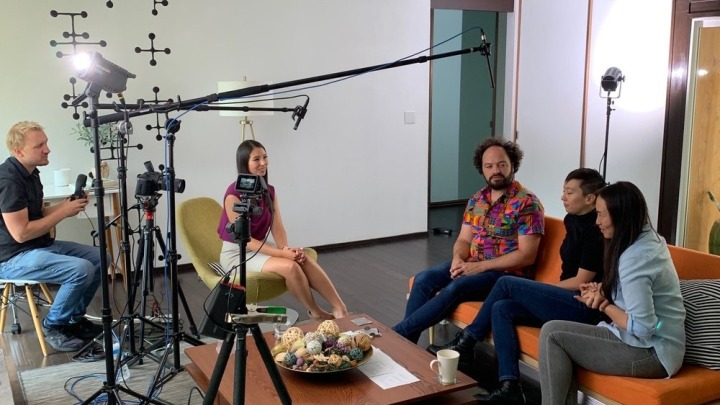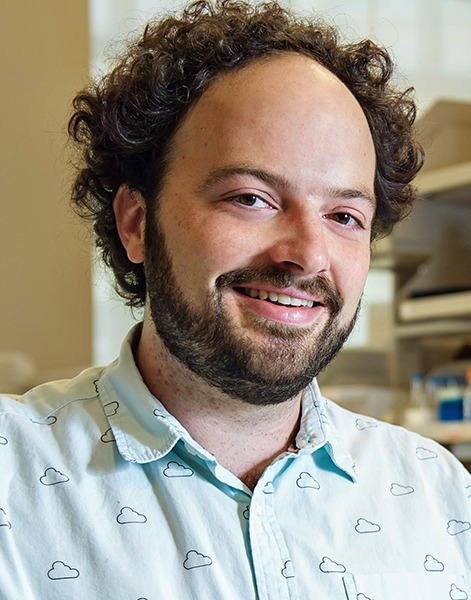
New podcast explores the past, present and future of this Nobel Prize-winning technique

Five years ago, the Nobel Prize in Chemistry went to three researchers who developed a highly specialized method for visualizing in 3-D the molecules at work inside cells. The method, called cryo-electron microscopy (cryo-EM), opened the door to understanding the function of molecules that previously remained inaccessible to scientists using other existing techniques.
The award recognized a major turning point in a field that was once derided as “blobology,” a reference to the unhelpfully fuzzy images it produced in its early days. With advances in computing and image processing over the past 10 years, scientists have seized on the power of this technique to answer exciting biological questions (such as providing crucial details about the shape and function of the SARS-CoV-2 viral particle in the early days of the pandemic).
A new podcast and video series hosted by three faculty members from the University of Michigan, Cornell University and Columbia University aims to explore what the future of cryo-EM will look like — while also highlighting the career development and experiences of a wide range of experts in the field.
“Because cryo-EM has become established technology, now the field is really poised to start going in different directions,” says Mike Cianfrocco, Ph.D., faculty member at the U-M Life Sciences Institute and one of the cohosts. “We wanted to create a way for people to hear different stories of the field and a variety of stories about growing in the field and perspectives on how we can move forward.”
The series grew out of a strong desire to reconnect as researchers re-emerged from the more isolated conditions brought about by the COVID-19 pandemic. In 2020, the three cohosts formed a virtual cryo-EM group where young faculty got together to discuss their research, their experiences leading labs, and how they were managing their various roles during the pandemic.
Then, as scientific meetings began to return in person, they saw an opportunity to expand this connection.
“It happened that the two main scientific meetings for our field were going to be happening in Portland at almost the same time, so we knew many cryo-EM researchers would pass through the area within that one week” recalls cohost Chi-Min (Mimi) Ho, Ph.D., an assistant professor of microbiology and immunology at Columbia. “We saw this unique opportunity to elevate conversations about important issues in our community and to think together about the future.”
“It was really born out of a desire to connect to people again,” adds Cianfrocco, who is also an assistant professor of biochemistry at the U-M Medical School. “We were connecting regularly throughout the pandemic, and we just thought ‘what if we could grow this into a way to talk to more people in the field and learn their stories?’”
Each of the six episodes features a different guest, ranging from first-year faculty members to established leaders in the field.
“In every interview, we heard stories that we hadn’t expected and learned something new, not just about the interviewees but about each other and about the field,” says cohost Liz Kellogg, Ph.D., an assistant professor of molecular biology and genetics at Cornell. “We are really excited to bring these stories to our audience.”
Watch the first episode:
The Plunge Podcast
New episodes of the series, produced by ThermoFisher, will be released every two weeks beginning Oct. 10, 2022. They can be found at Spotify, YouTube, Amazon Music or ThePlunge.org


